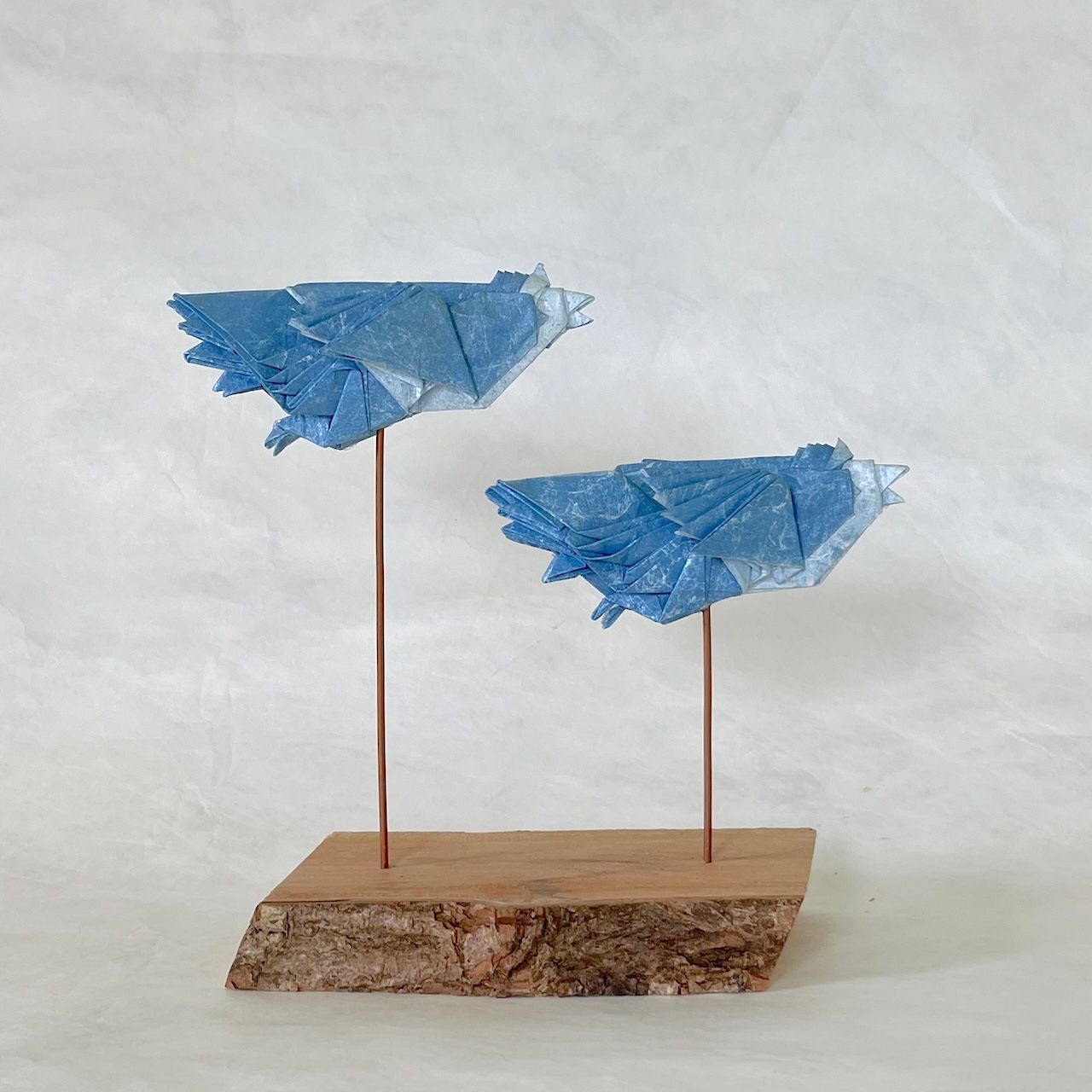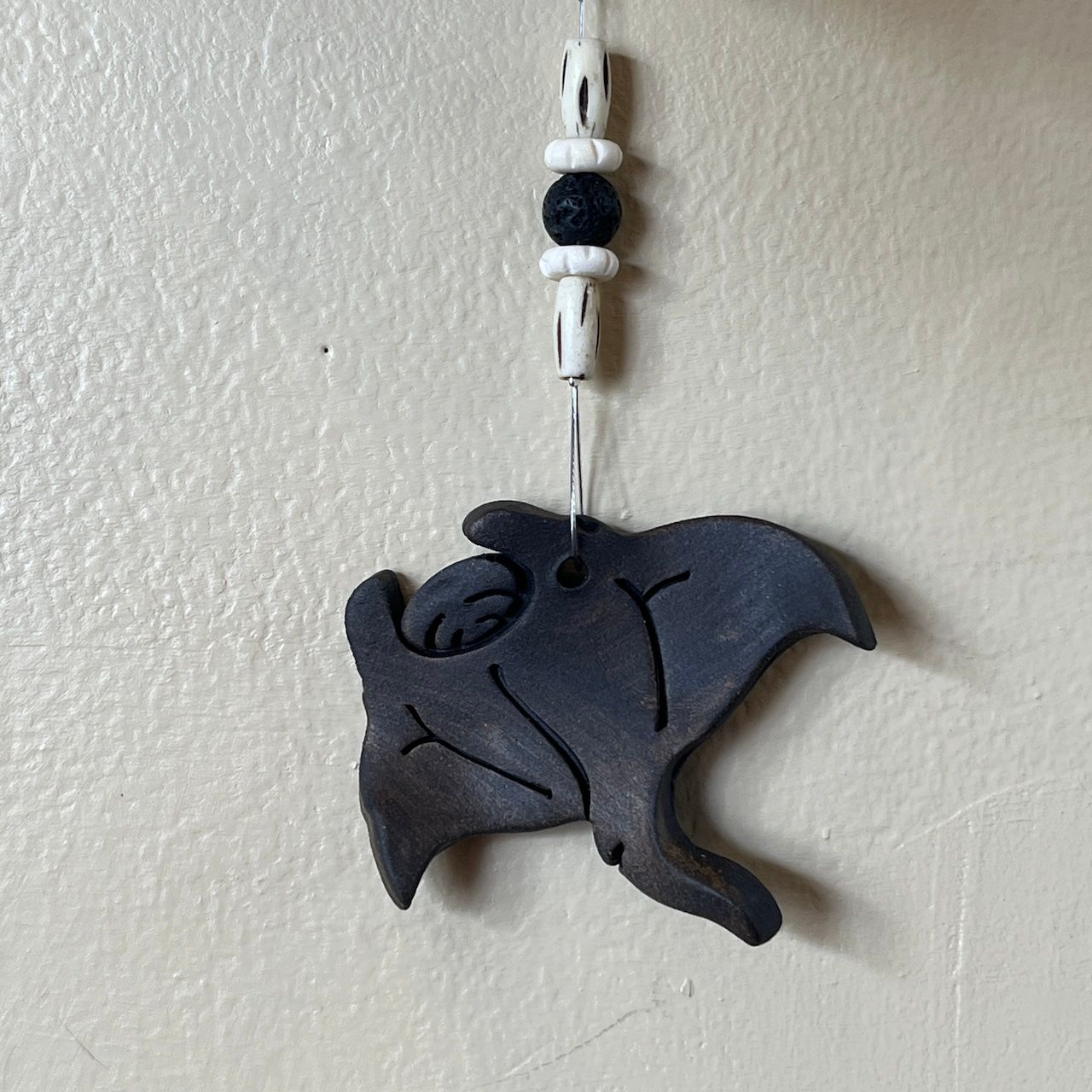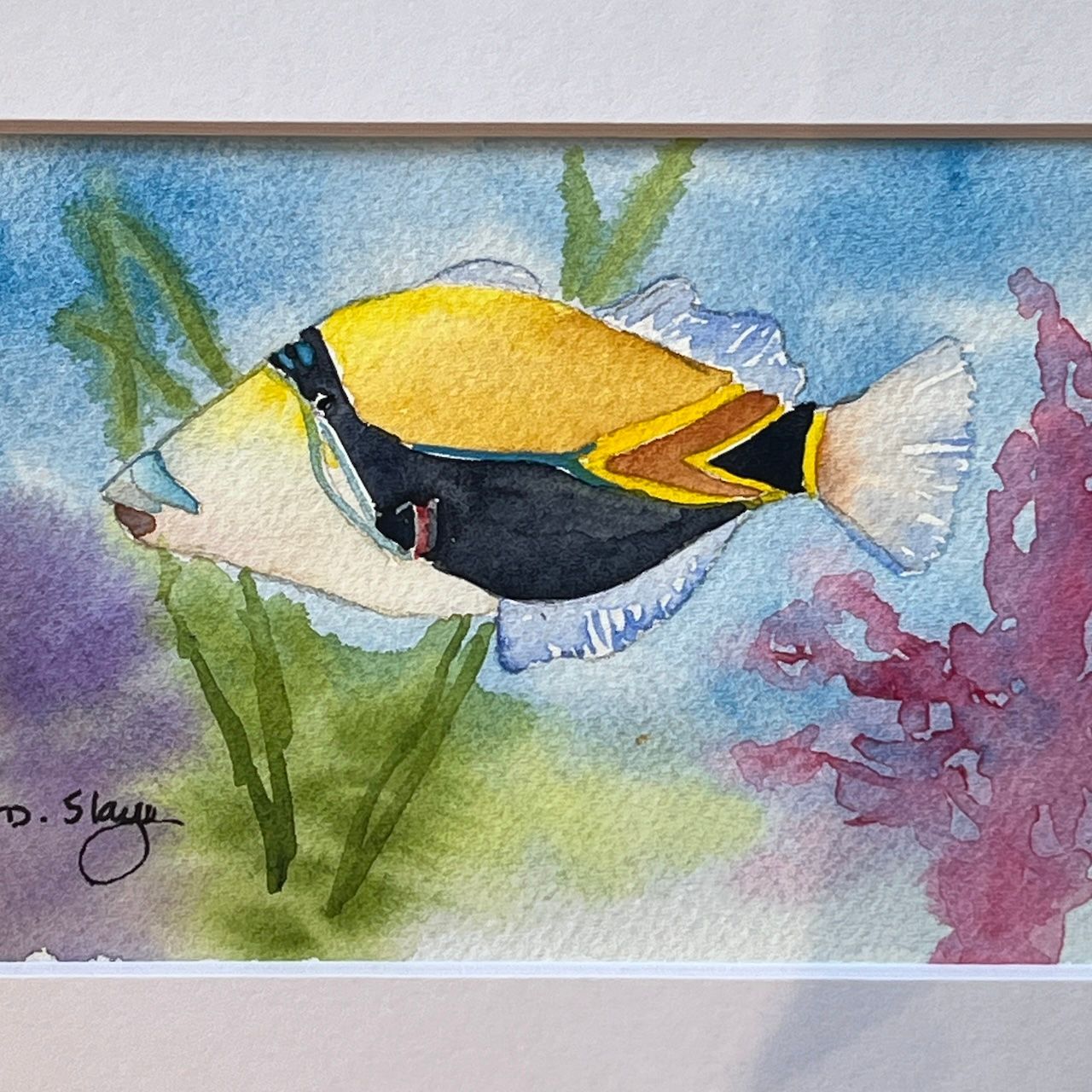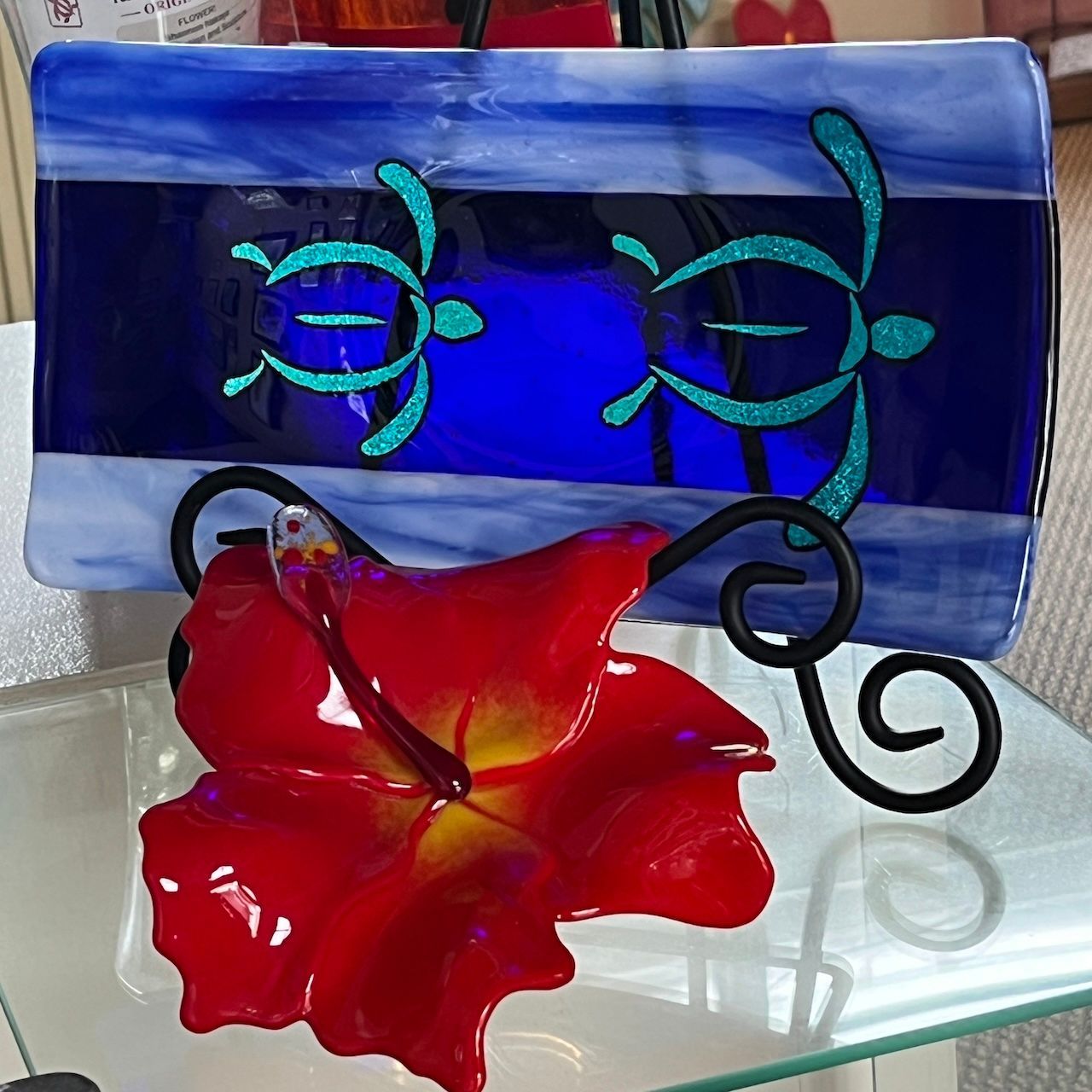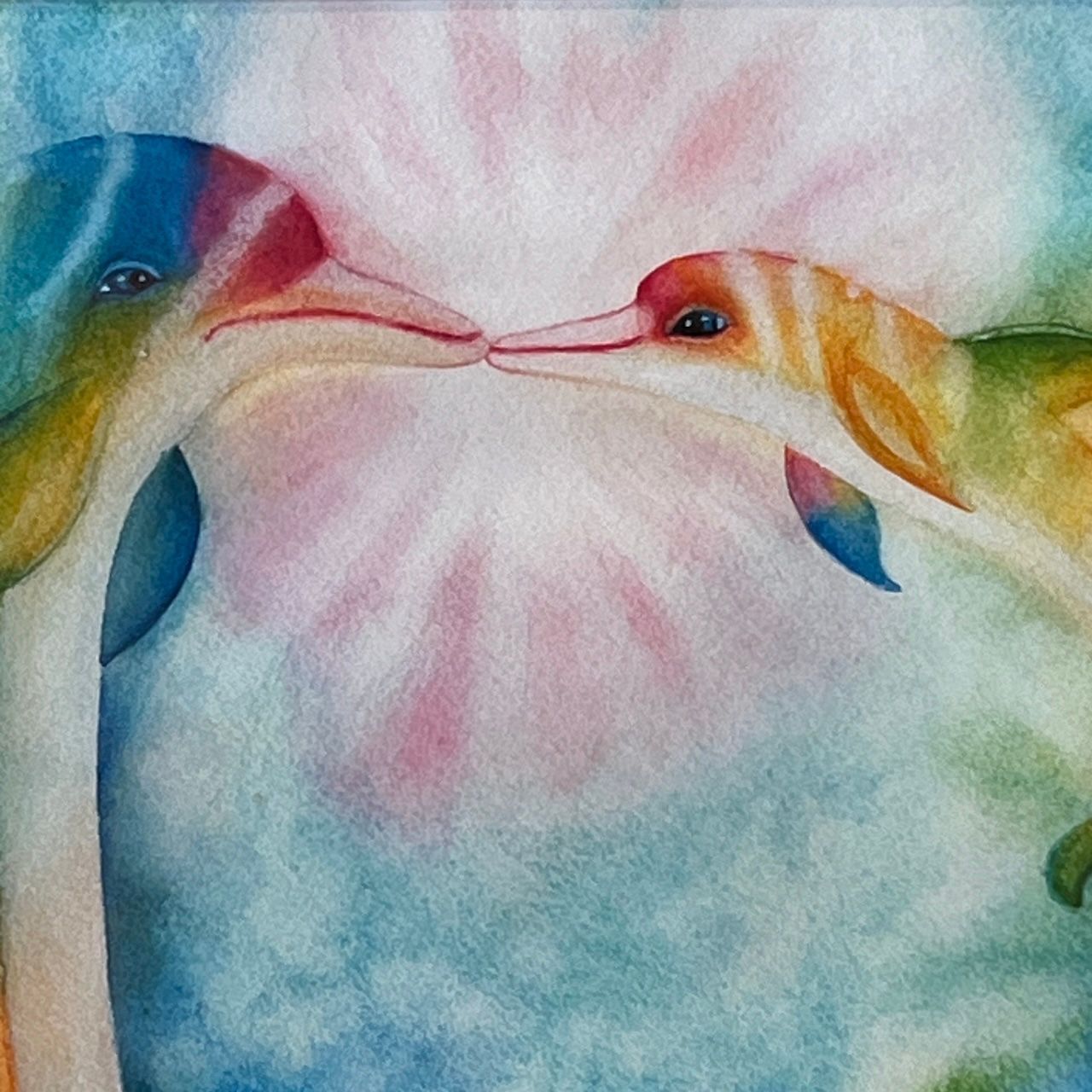August 2024 at the Gallery
Volume 15, Issue 8
It's hard to miss a monstera plant, especially here on the Big Island where it often grows 3 foot diameter leaves. Monstera is by no means a misnomer. Besides their impressive size, monstera leaves are uniquely lobed and fenestrated. The heart shaped leaves with charming lobes and Swiss-cheese type holes are a favorite among designers and for their graphic impact.
A few years ago, fused glass artist Tamisha Lee purchased a monstera leaf mold. Molds are used to shape molten glass in a process called open-faced casting. As she was trying to make art from the commercially available mold, she realized that it lacked the personality and pizzazz of the actual plant. That led her to design and make her own mold. She purchased some low fire clay (glass fires at a lower temperature than most ceramic firings), and created a mold using a monstera leaf from her own garden. As she describes the process, she comments: “One of my biggest challenges was finding a monstera that wasn’t too big! Small monstera leaves are not plentiful.”
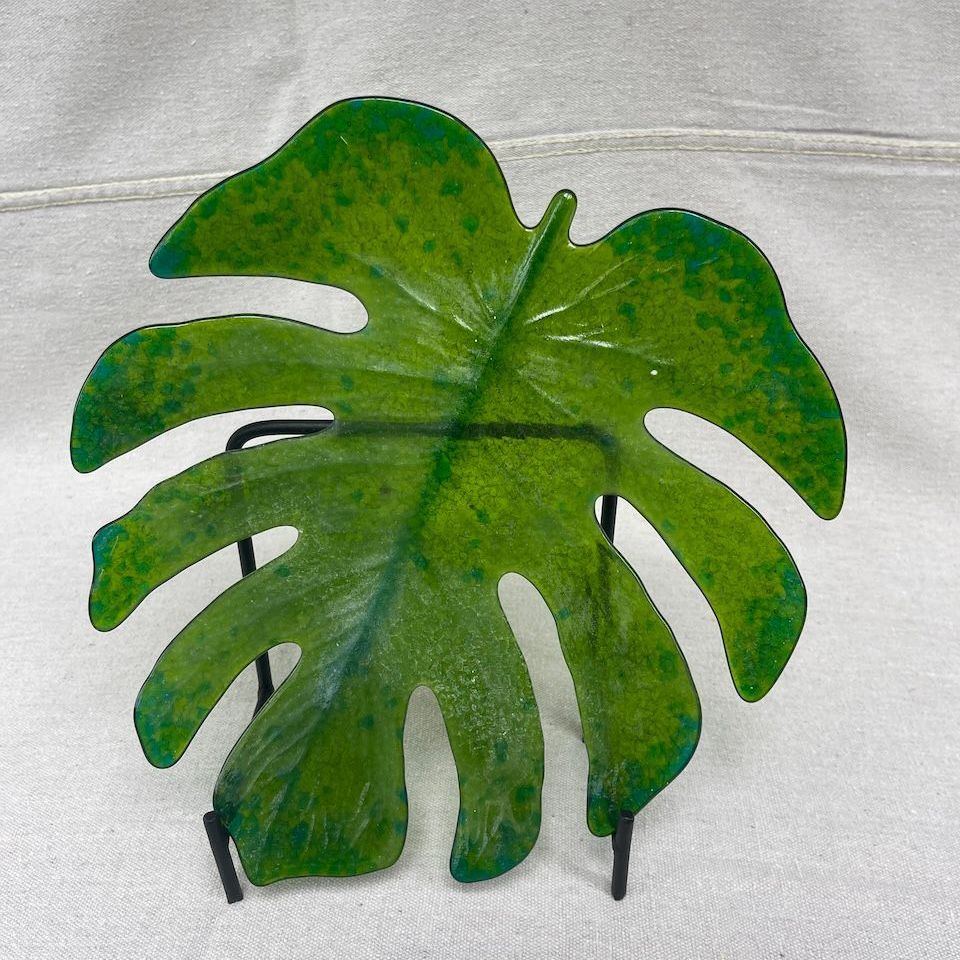
At first, she made her monstera leaves using just one or two shades of green glass. It was an elegant product, but the process soon got repetitive and dull. So she let loose her inner artist, exploring non-traditional monstera leaf colors, and combinations of colors. The results are an eye-catching fiery red-orange, and mesmerizing blends of different shades of red or green or purple or blue or yellow, or all the above. Yes, there is even a rainbow in the monstera leaf collection.
Tamisha did not stop there. Realizing that her abstract blend of colors and different shades of a color melded like watercolor paints might, she conceived to use her monstera leaf mold as a type of canvas for creating images with fused glass. This opened a window to infinite creative expression. Sunsets, volcanoes, bird of paradise, and silhouettes of palm trees in the light of the moon have been added to her monstera collection, and there will certainly be more to come.
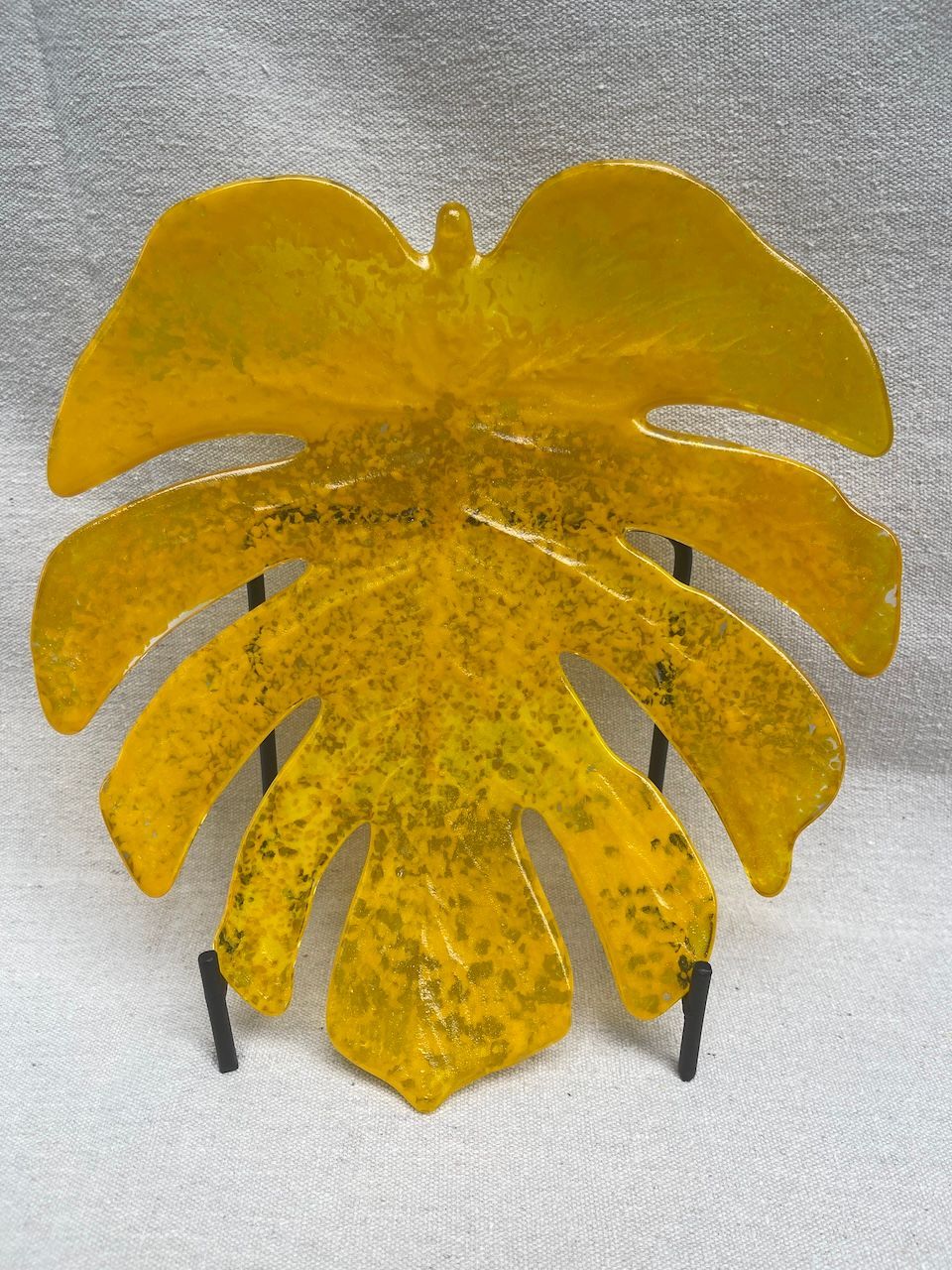
Slide title
Write your caption hereButton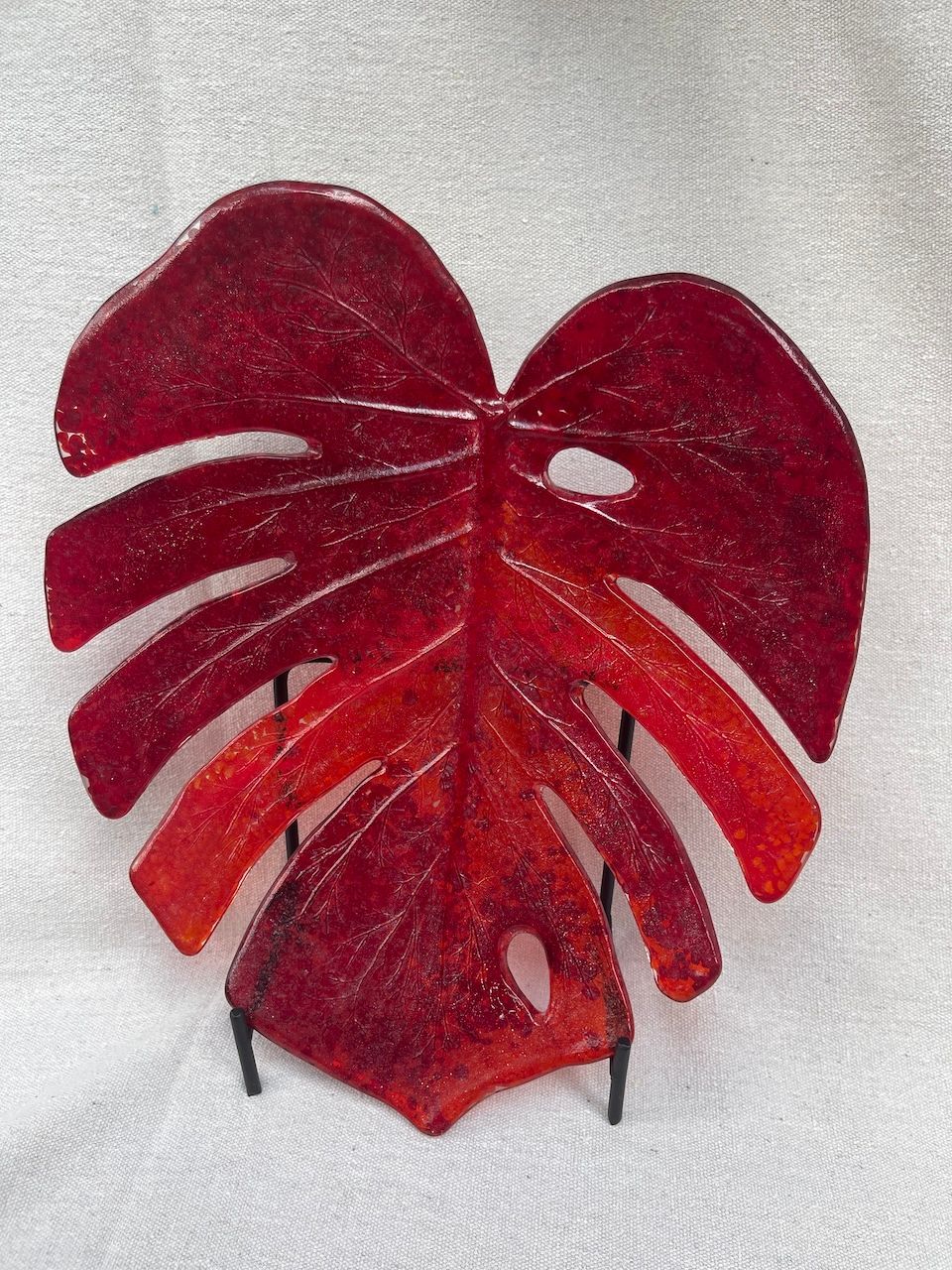
Slide title
Write your caption hereButton
Slide title
Write your caption hereButton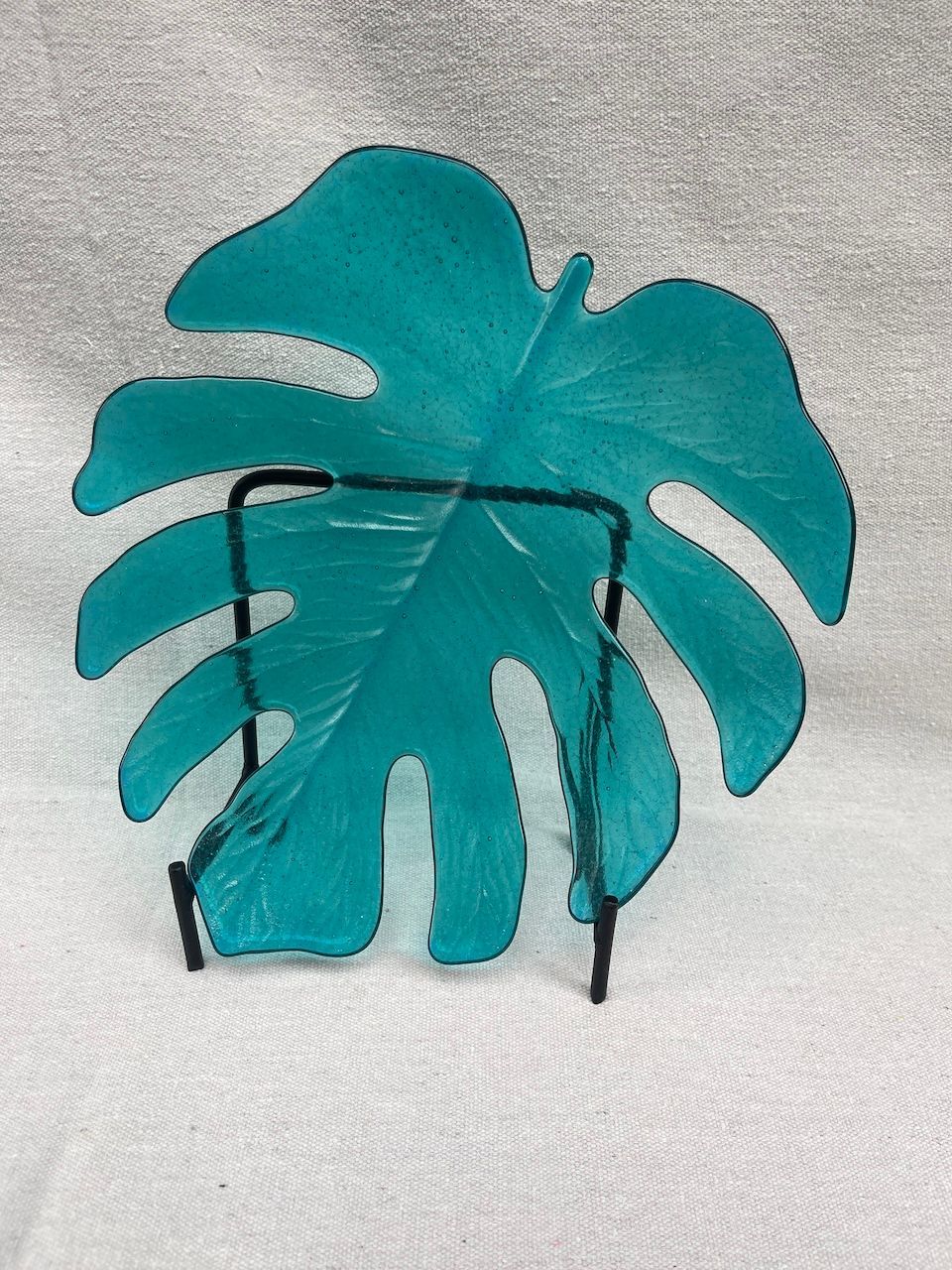
Slide title
Write your caption hereButton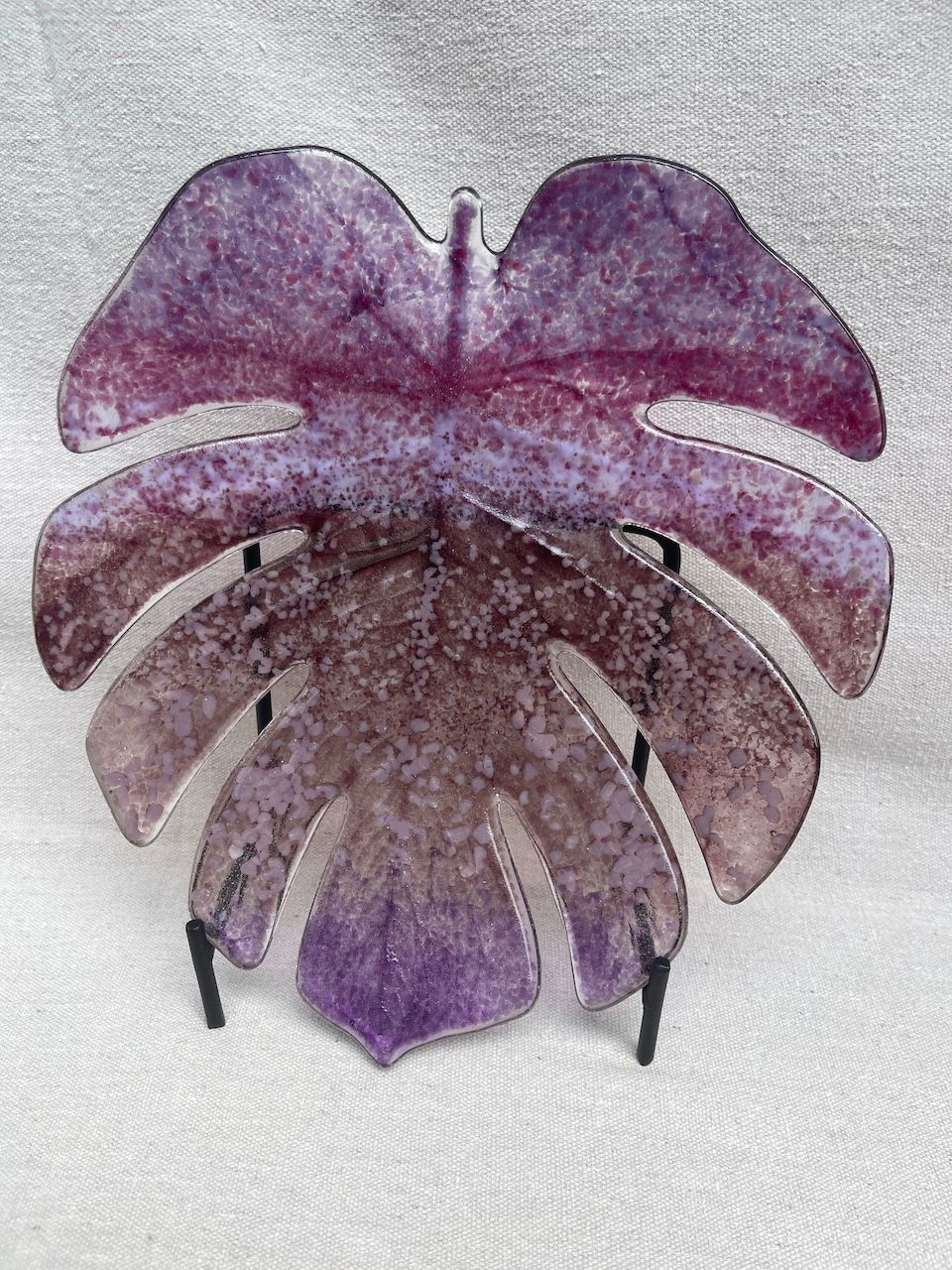
Slide title
Write your caption hereButton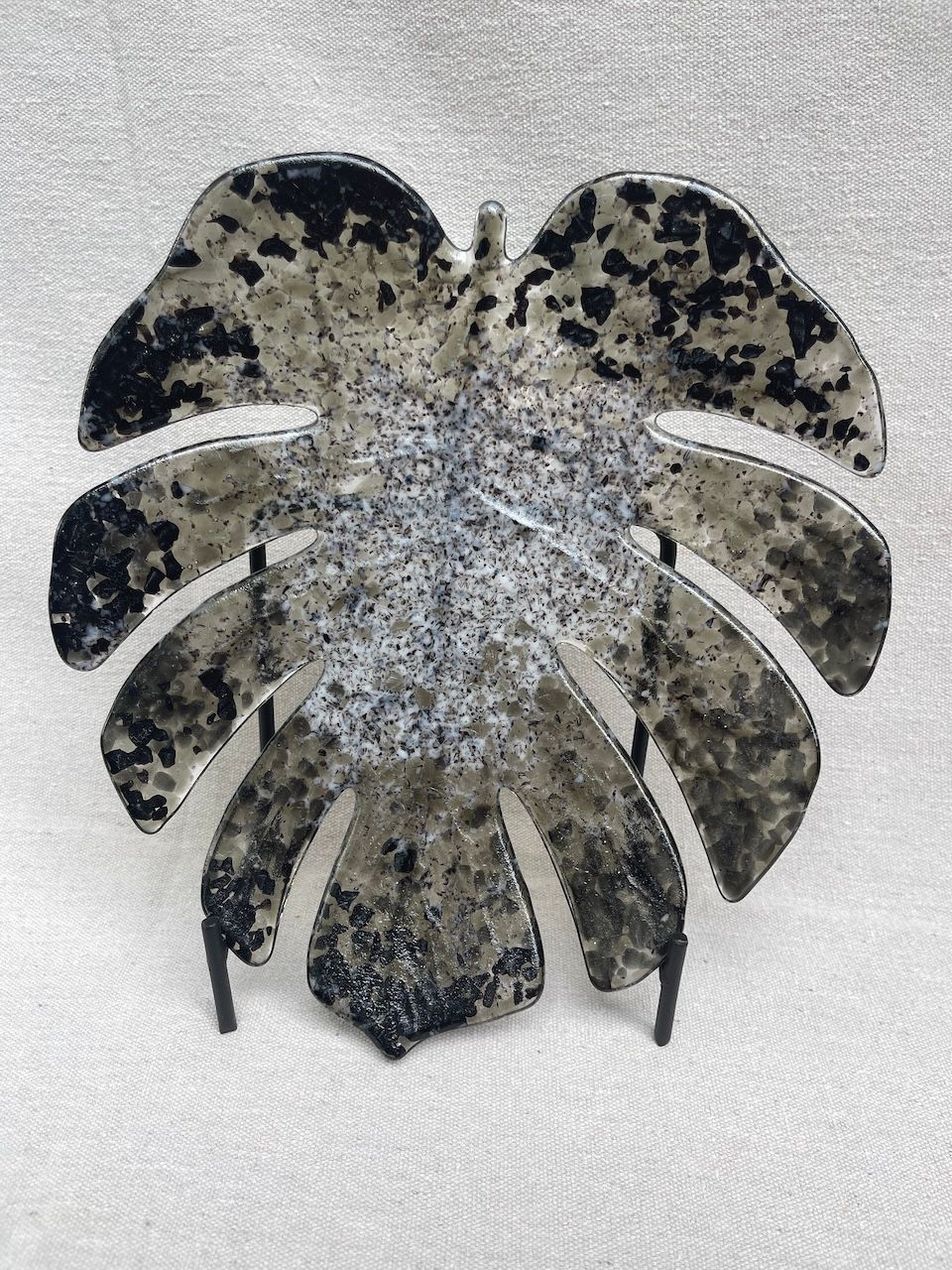
Slide title
Write your caption hereButton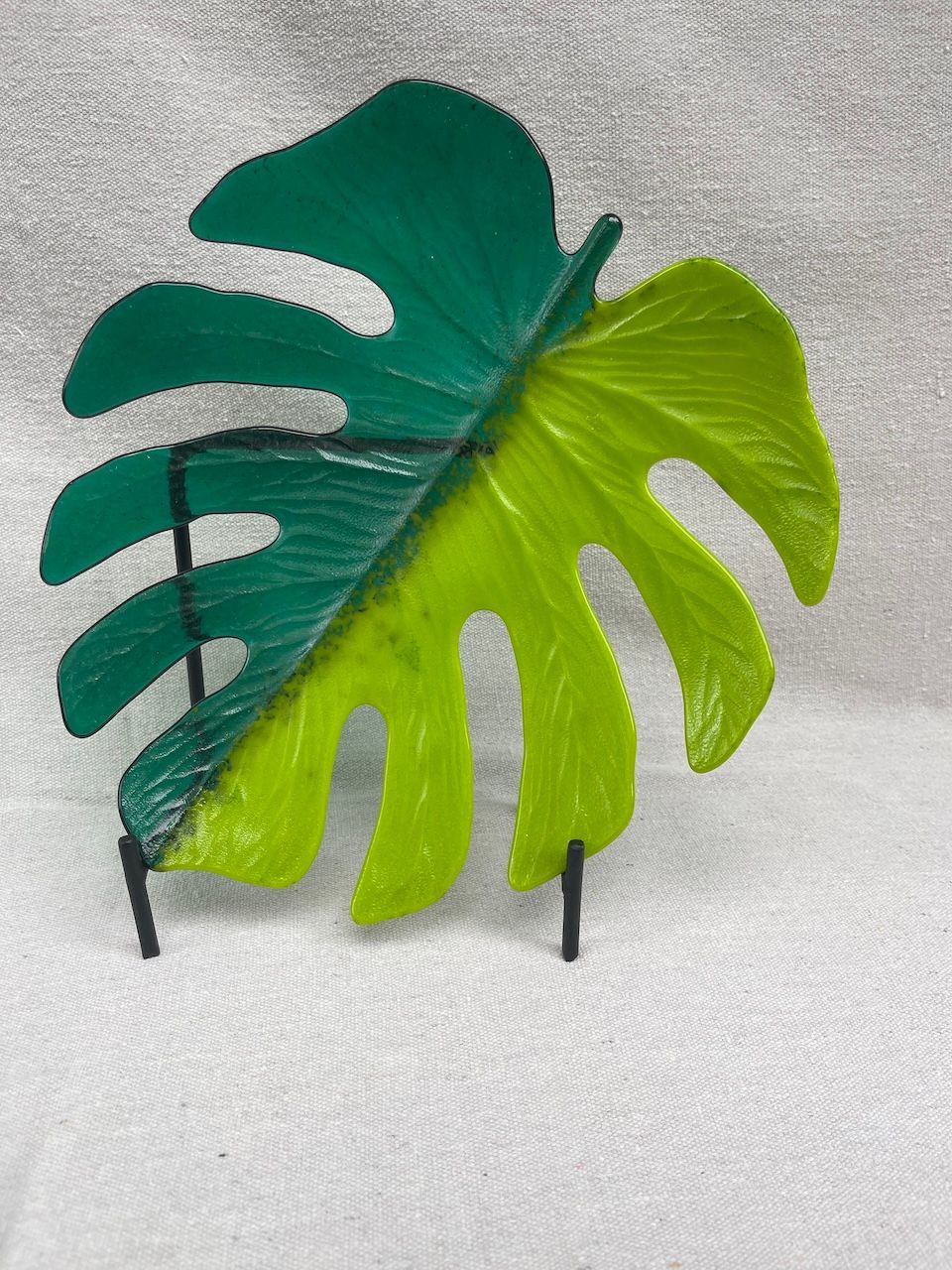
Slide title
Write your caption hereButton
Slide title
Write your caption hereButton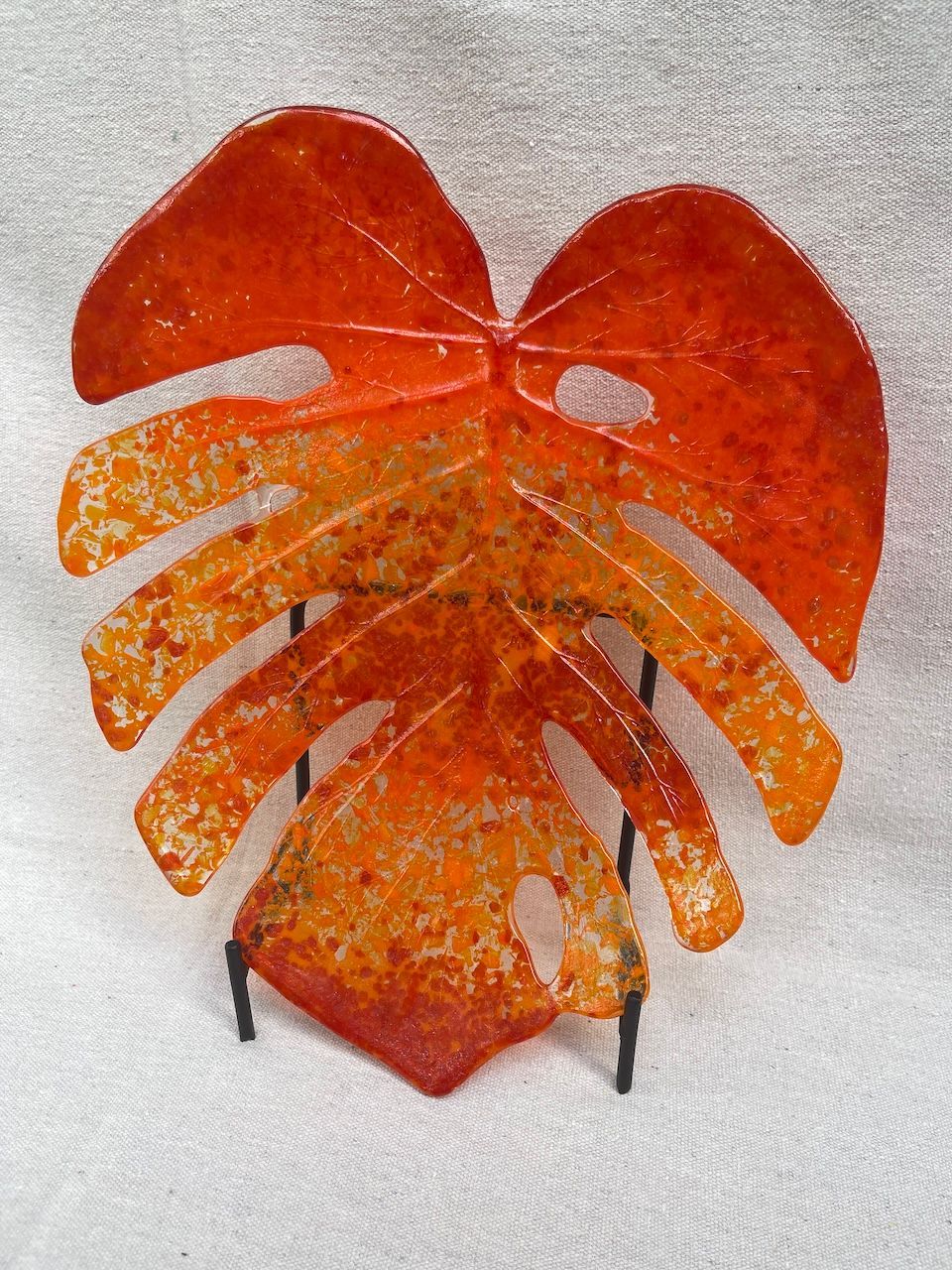
Slide title
Write your caption hereButton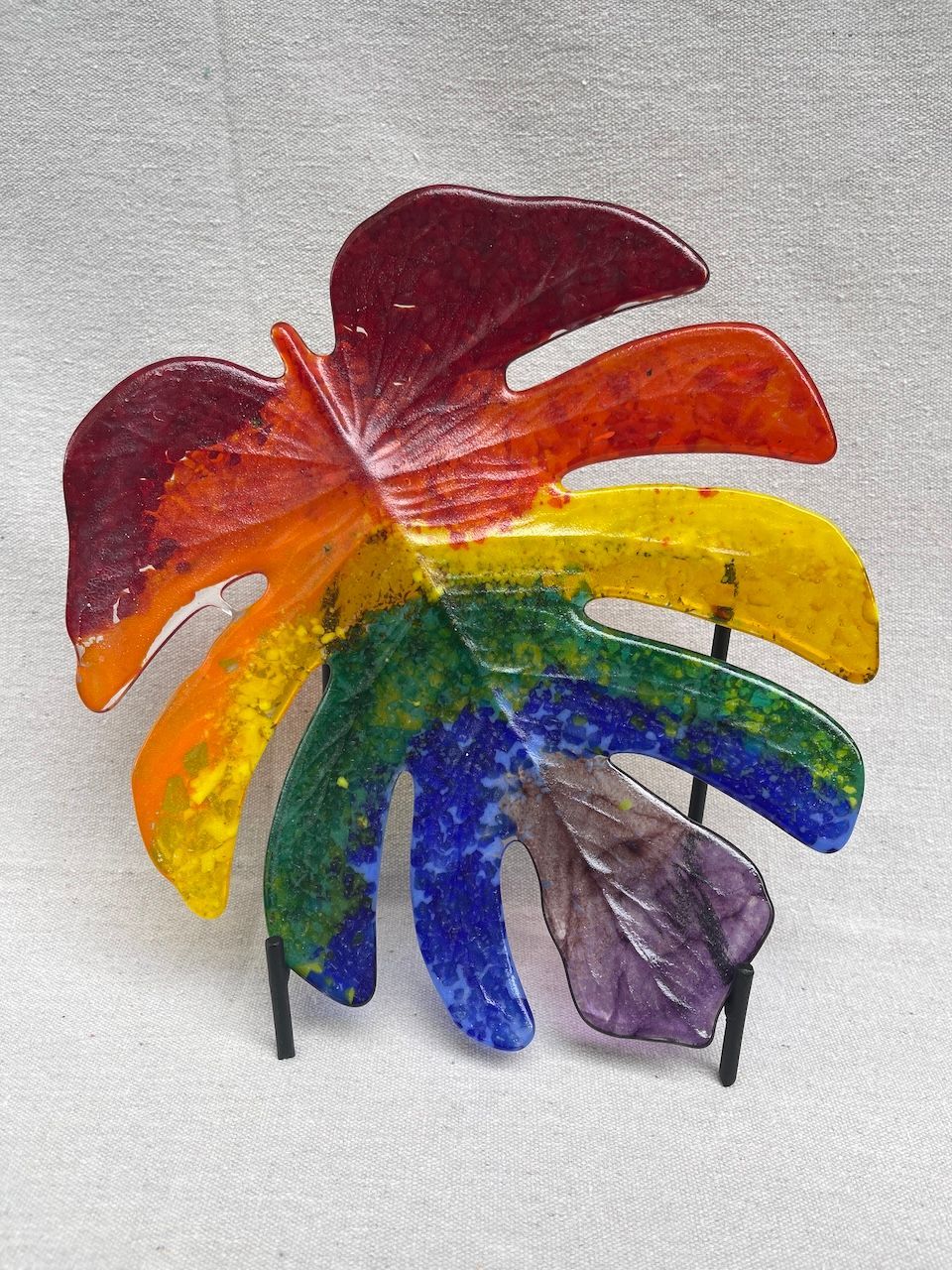
Slide title
Write your caption hereButton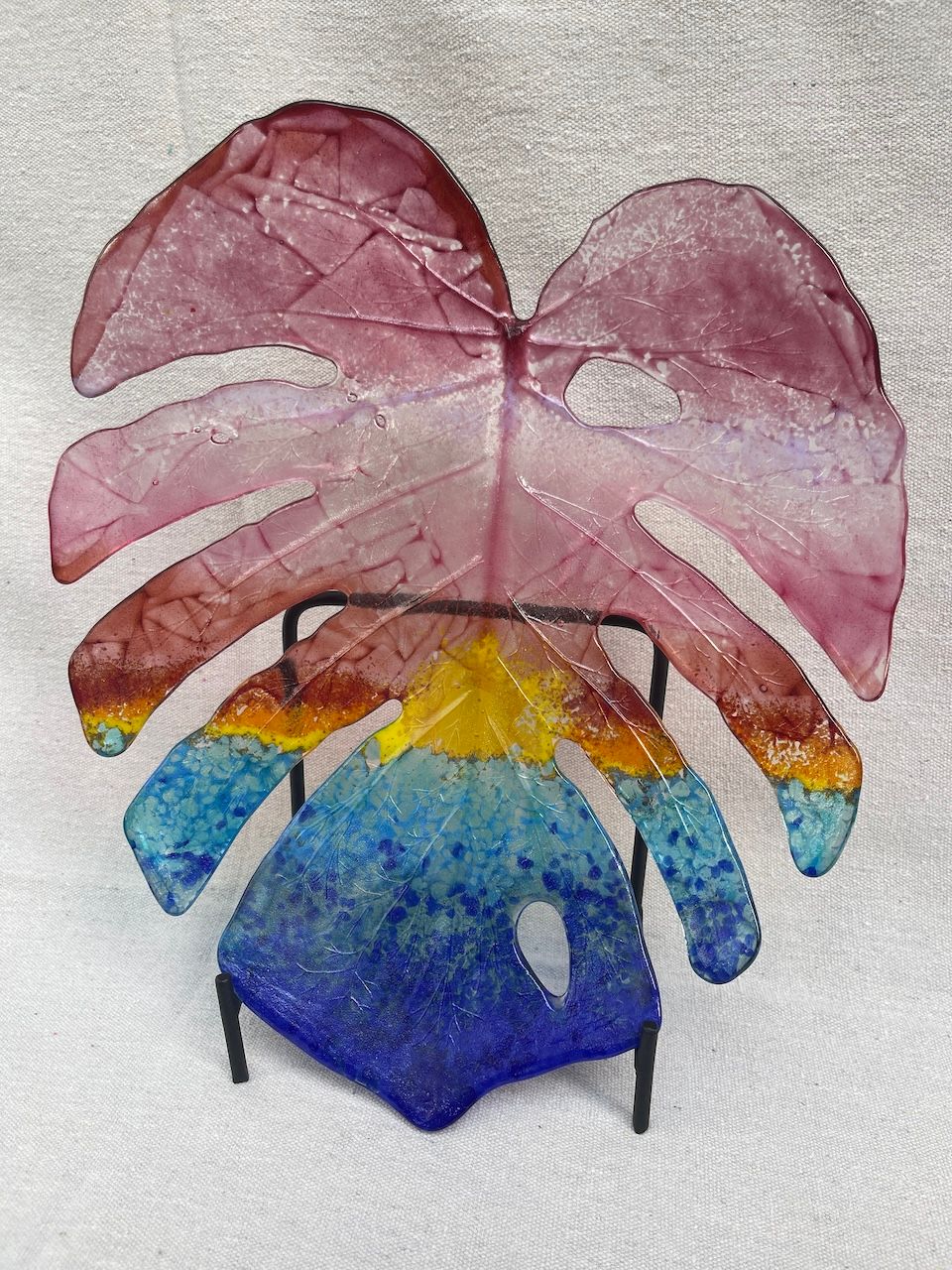
Slide title
Write your caption hereButton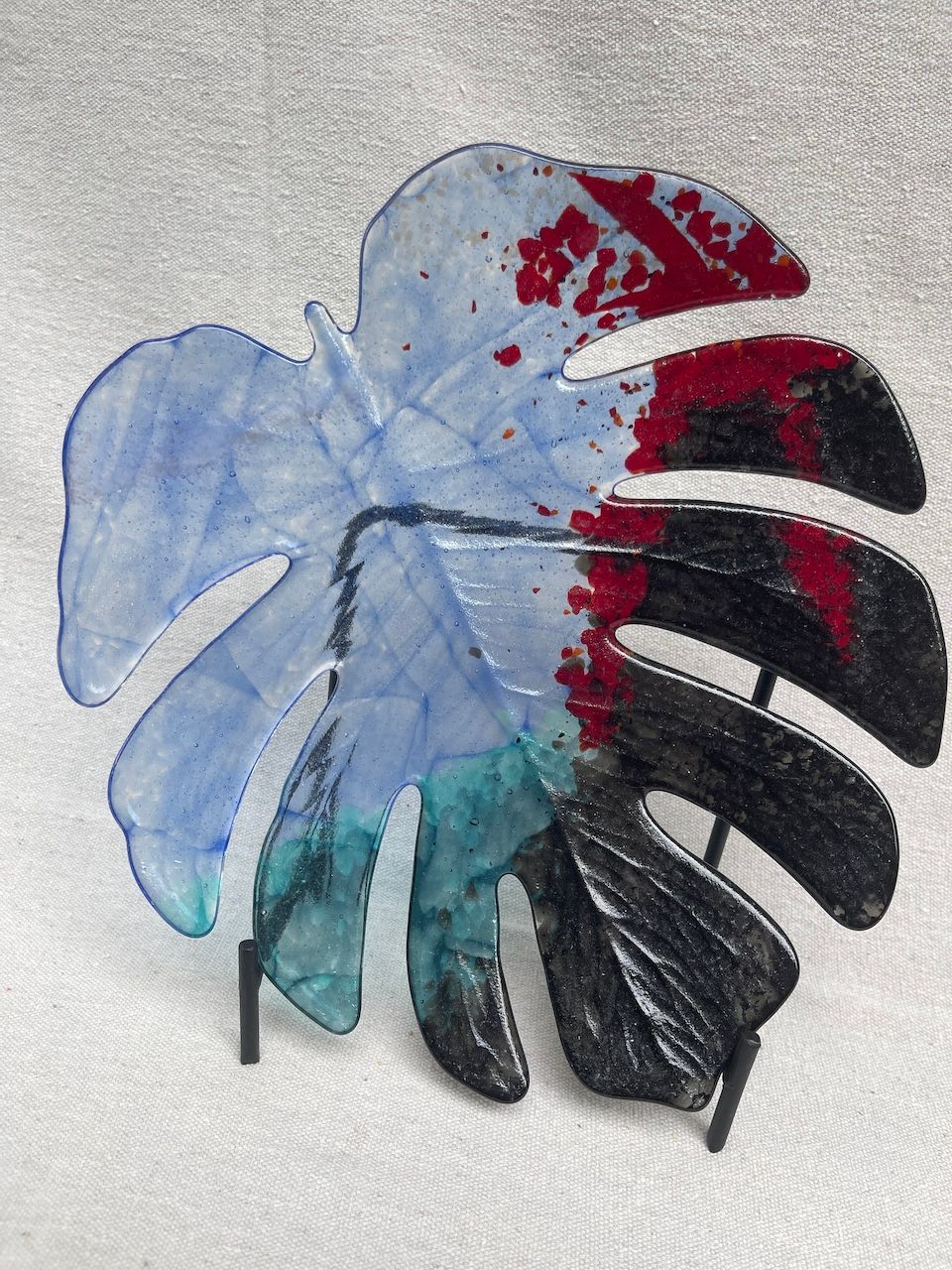
Slide title
Write your caption hereButton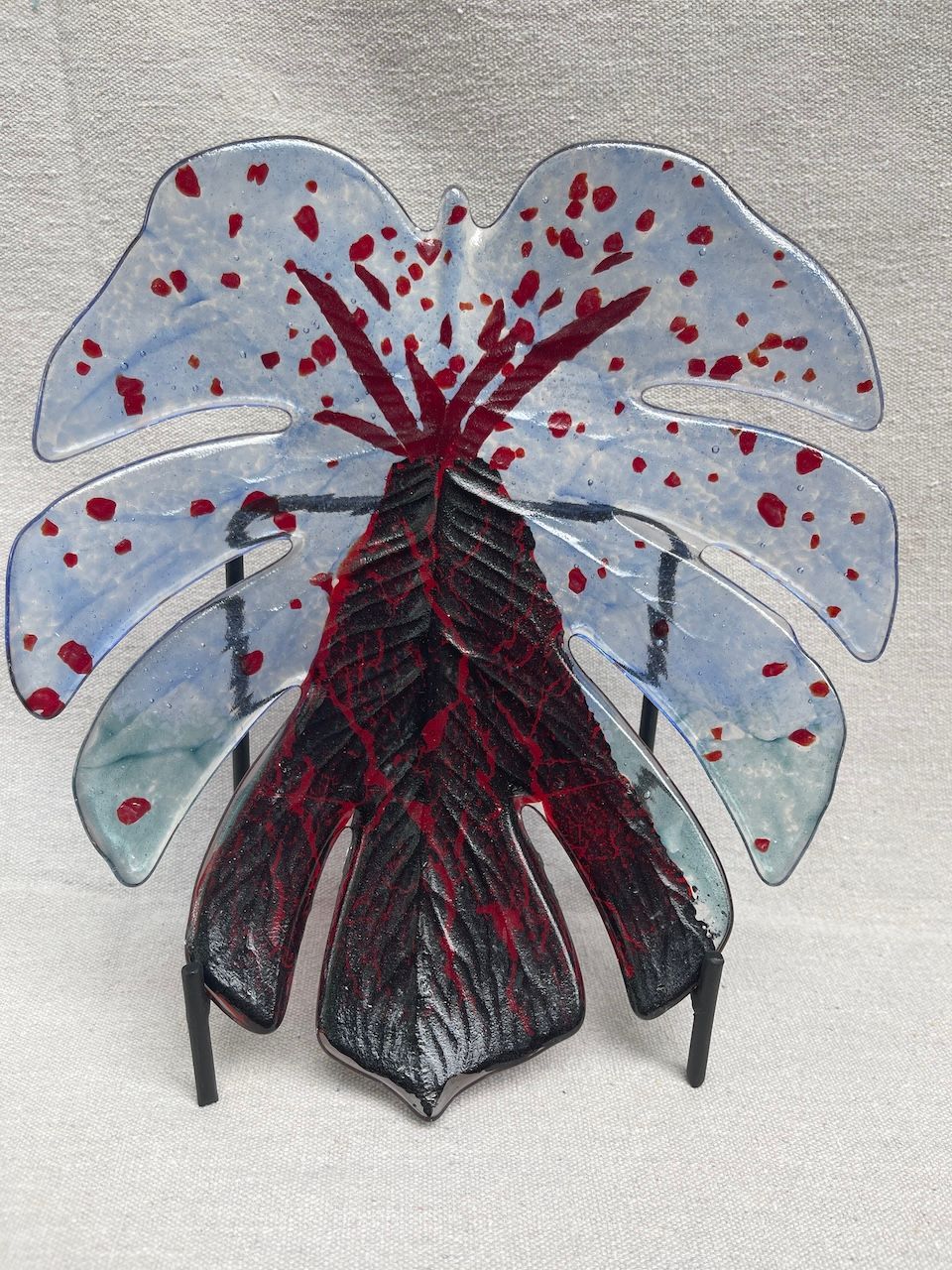
Slide title
Write your caption hereButton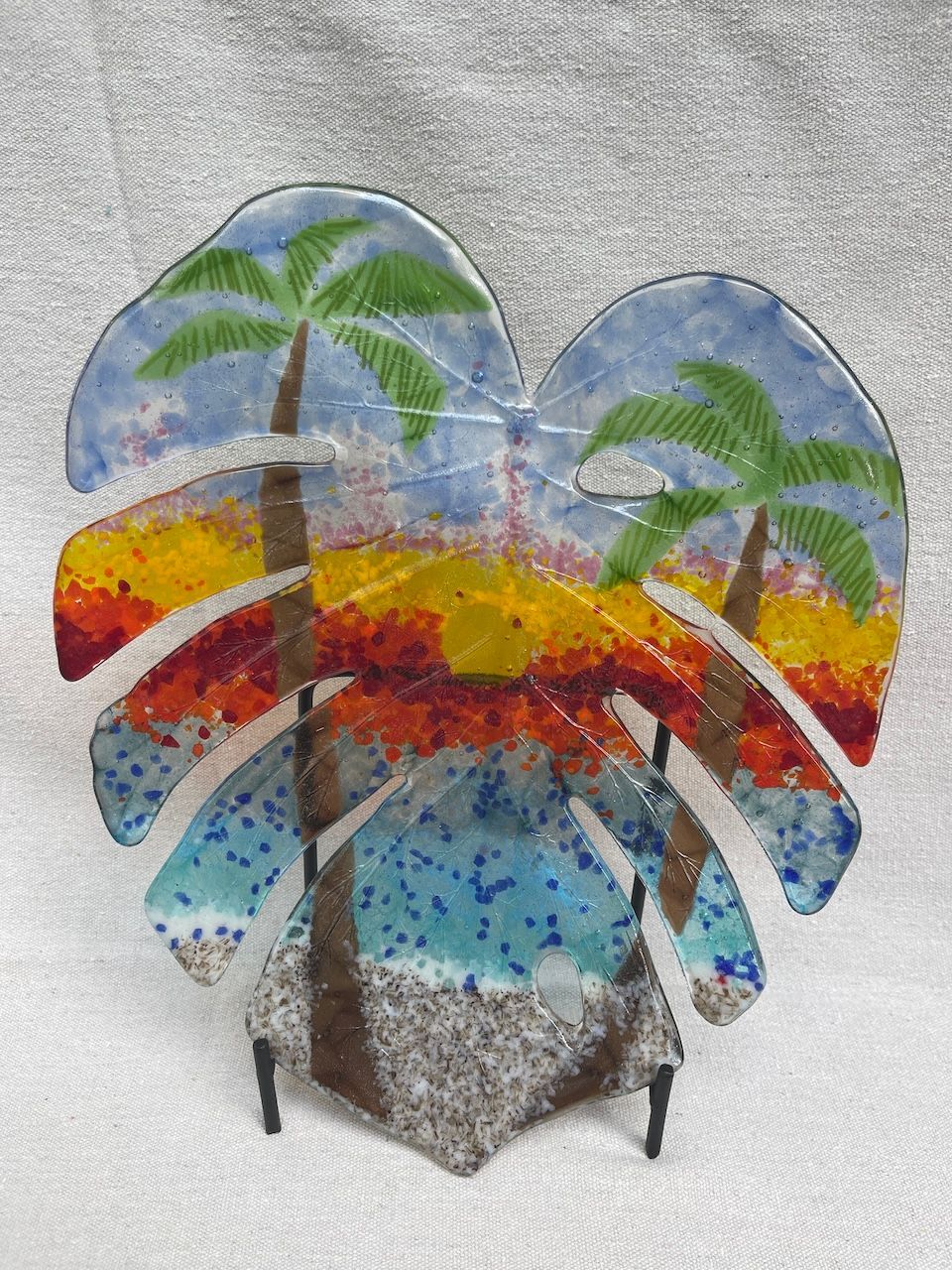
Slide title
Write your caption hereButton
Slide title
Write your caption hereButton
Volcano Power
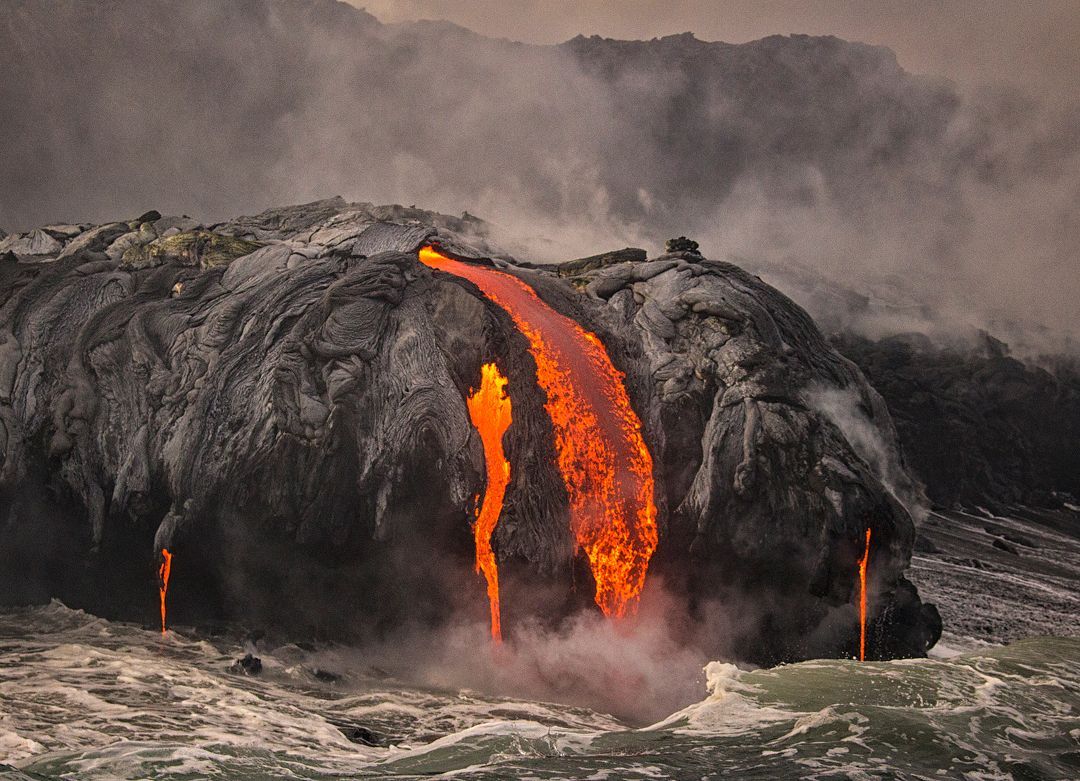
Whether you perceive volcanoes to be the ultimate symbol of life as they give rise to new land, or a looming threat of devastation and destruction, or an expression of the power of nature, volcanoes, especially active ones, tend to get people’s attention.
The Big Island of Hawaii is home to three active volcanoes: Kilauea, Mauna Loa, and Hualalai. Featured at the heart of the Volcanoes National Park, and clearly quite alive by measure of steam vents, earthquakes, rising and falling lava levels, and oh, significant eruptions, Kilauea is the most well-known of the three. One of the more recent and significant eruptions in 2018 destroyed landscapes and homes and displaced families and animals. A more comprehensive record of Kilauea eruptions can be found at https://www.nps.gov/havo/learn/nature/eruptions.htm. We really do share the island with a sleeping dragon.
Mauna Loa reminded us that while she might be less showy from day-to-day, she should not be ignored. In 2022, red molten lava flowed down the slope of the 14,000 foot high mountain. It was a different kind of lava viewing than that produced by Kilauea, but no less attention-grabbing or majestic.
Hualalai is that mountain you can’t miss when in Kailua Kona. Many of us live on its slopes. Historically, Hualalai has erupted every 200 to 300 years. The most recent eruption was in 1801. Geologists reassure me that there will very likely be a significant increase in local earthquake activity preceding an eruption. In the meantime, it’s hard to beat the weather and the view.
Without imminent threat, we are at leisure to appreciate the incredible power of nature as manifested in volcanic activity and landscaping, both creative and destructive. Indeed, customers are drawn to the “Volcano Wall” at our gallery. These are not just images recording an event; they are symbols for creation and destruction and existence itself; beginnings and endings.
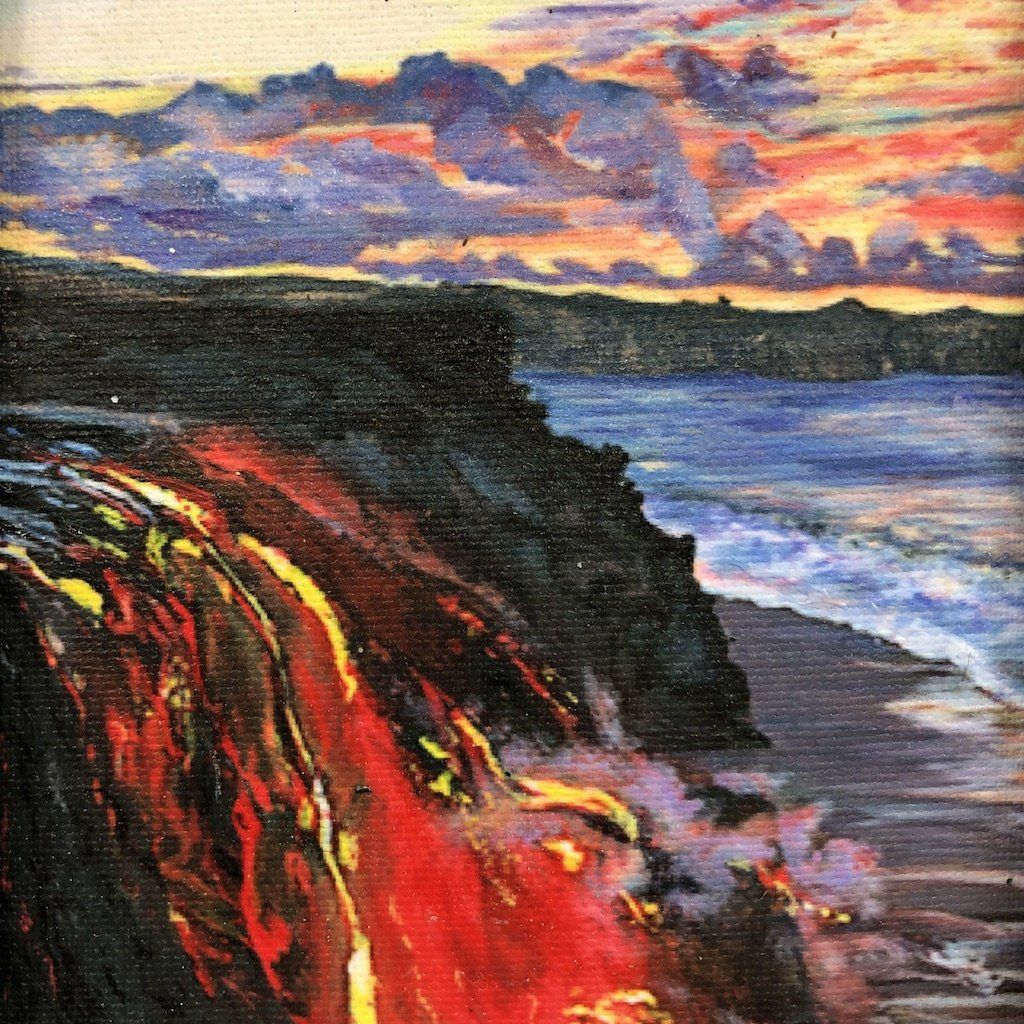
While we are the privileged who reside near three such natural powers and experience their different moods, there are other active volcanoes all over the world, and throughout the galaxy. Brad Lewis’ image titled Galaxias portrays this connection.
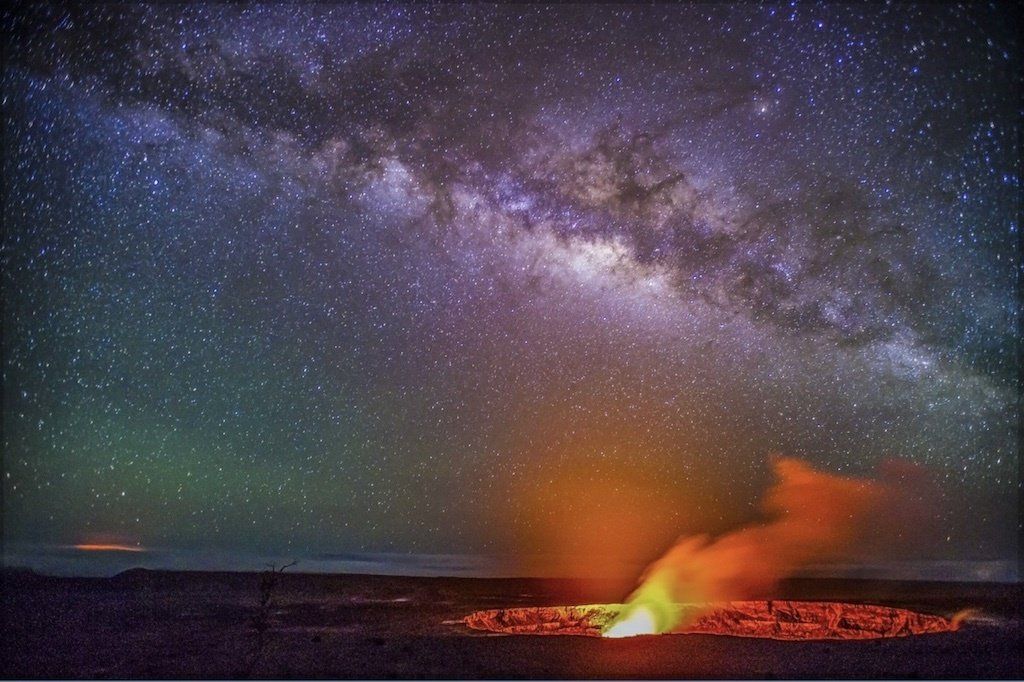
OMG!
😳😬
There's a Mongoose In The Gallery!
One Sunday afternoon, a prepubescent mongoose sauntered through the front door of the gallery. The first time it was kind of startling and cute. Nevertheless, an art gallery is no place for a wild mongoose, so it was quietly shoo-ed out the door. The second time it crossed the threshold, which was just a few minutes later, caused wonder and a bit of concern about the odd behavior, and the shoo-ing happened more expediently. The third time, the member artist on duty that day made the mistake of issuing a sharp, “No! You cannot be here.” This startled the mongoose into darting under and behind glass display cases and taking refuge in the storage room behind a wall of shelves, ladders, tents, and tables. There it remained hidden, unreachable, but audibly hissing and nattering and grunting to express its extreme displeasure with its circumstances.
A call out to fellow members (the joys of a co-op!) resulted in rapid delivery of a baited Havahart (T) trap. A few hours later, the trap springs and one very angry mongoose is caught. As the member artist on duty was sharing the victory with others and planning a relocation, the mongoose squeezed through he bars of the trap and resumed it’s occupation of the storage room.
Really, this it was not so funny at the time.
Clearly, we needed a smaller trap, which another member offered to bring the following day. In the meantime, the member on duty decided that it was better to contain the mongoose in the storage room rather than have it run rampant throughout the gallery. So a barrier of display cubes across the opening to the storage room was formed.
Mongoose did not comply with the barrier during the night, escaping its confinement and knocking over most of the art on the ground level. Fortunately nothing was damaged. It then returned to its hidey-hole in the storage room where it resumed hissing and nattering and grunting whenever sensing a human presence.
The humans finally scored! A few hours later, there was one very, very angry mongoose secured in the second trap. It was discreetly removed from the gallery and released among others of its kind, away from humans and buildings and storefronts.
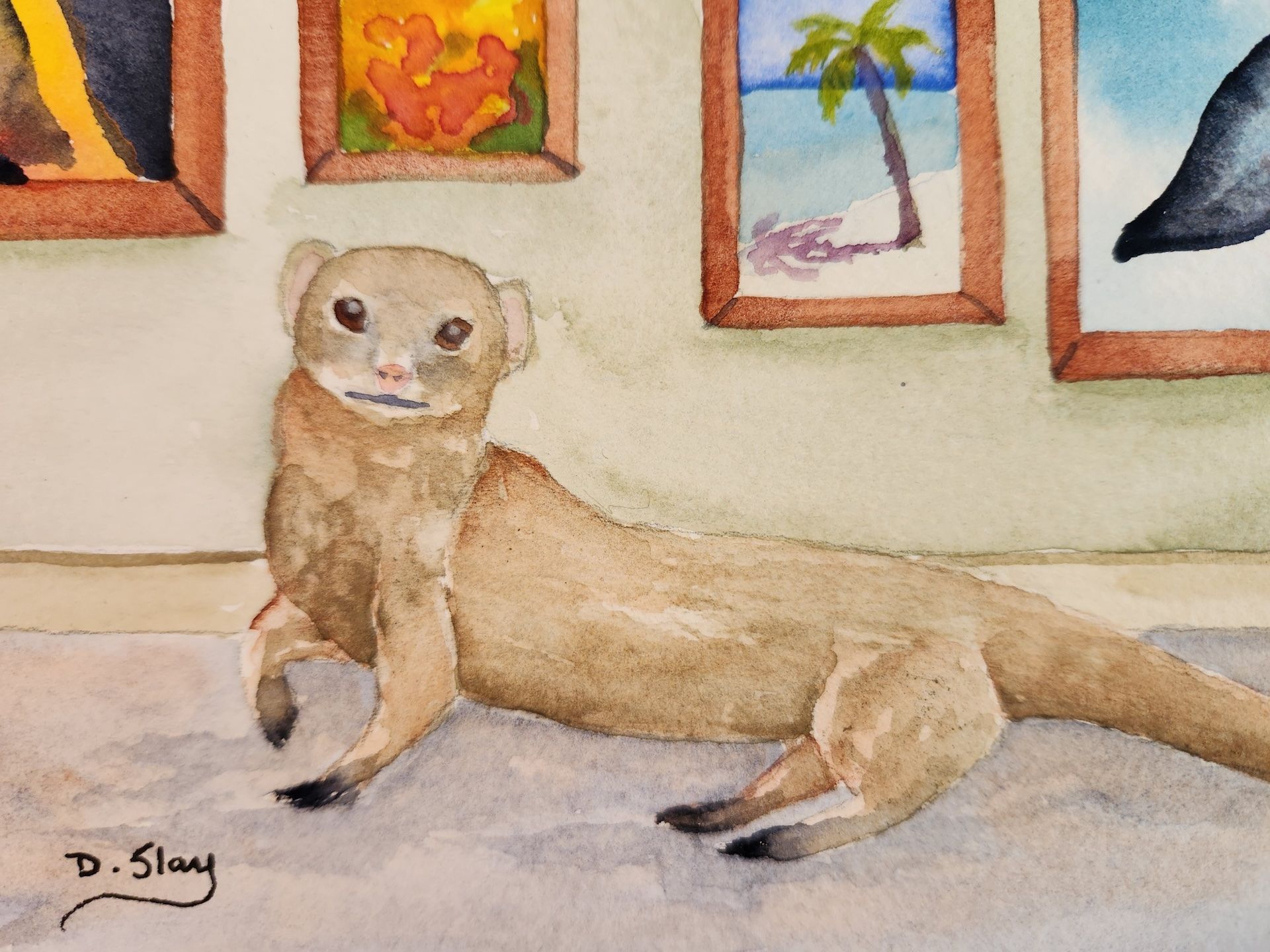
The commercial monstera leaf mold lacked the personality and pizzazz she was seeking, so she made her own mold. And she didn't stop there.
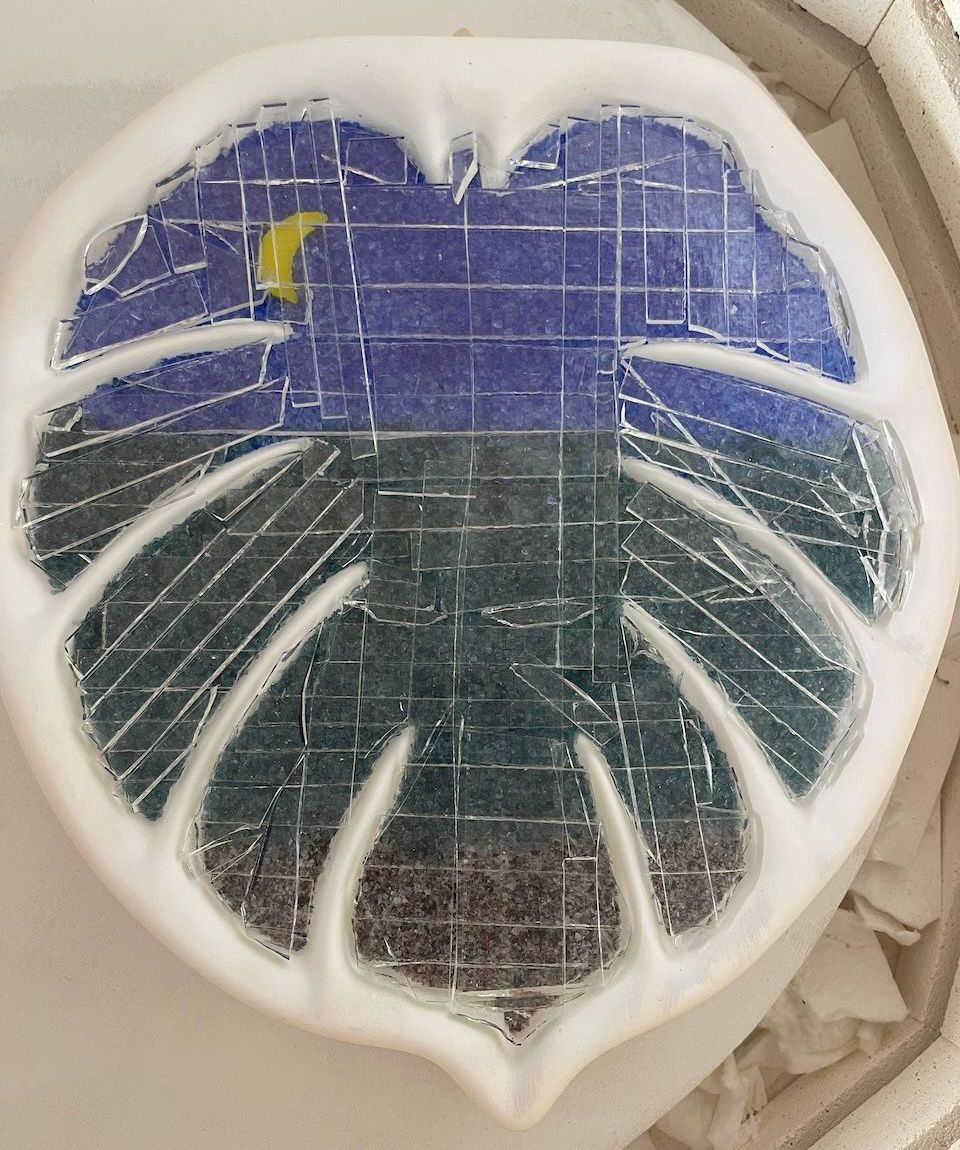
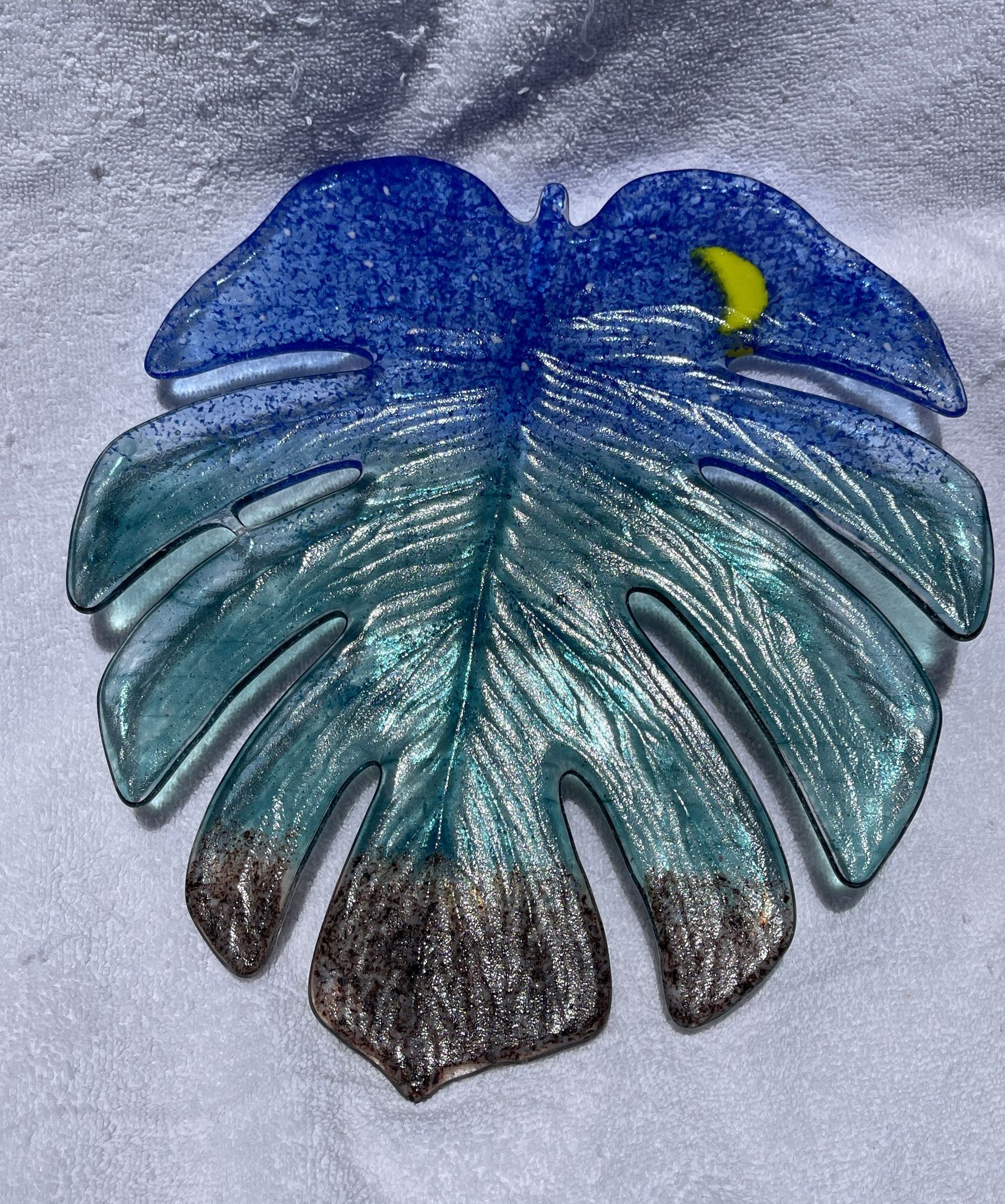
Seeing these monstera leaves as a collection, one realizes that like other prolific artists, Tamisha’s choices of color and images are glimpses of who she is and what is resonating with her in the now - delivering the unexpected, celebrating the new, rainbow pride, appreciating nature’s flora, sunsets and moonrises.
For this article, the leaf collection was imaged with a solid neutral background to highlight how glass of different colors can be blended and melted and shaped into fused glass art. But a second image of a particular red-orange monstera leaf in natural sunlight and real foliage in the background is also included to emphasize the translucency of glass. These pieces can be wall mounted, or displayed flat on a countertop or table; but like other glassworks, it truly comes alive and mesmerizes when installed where it can engage with sunlight.
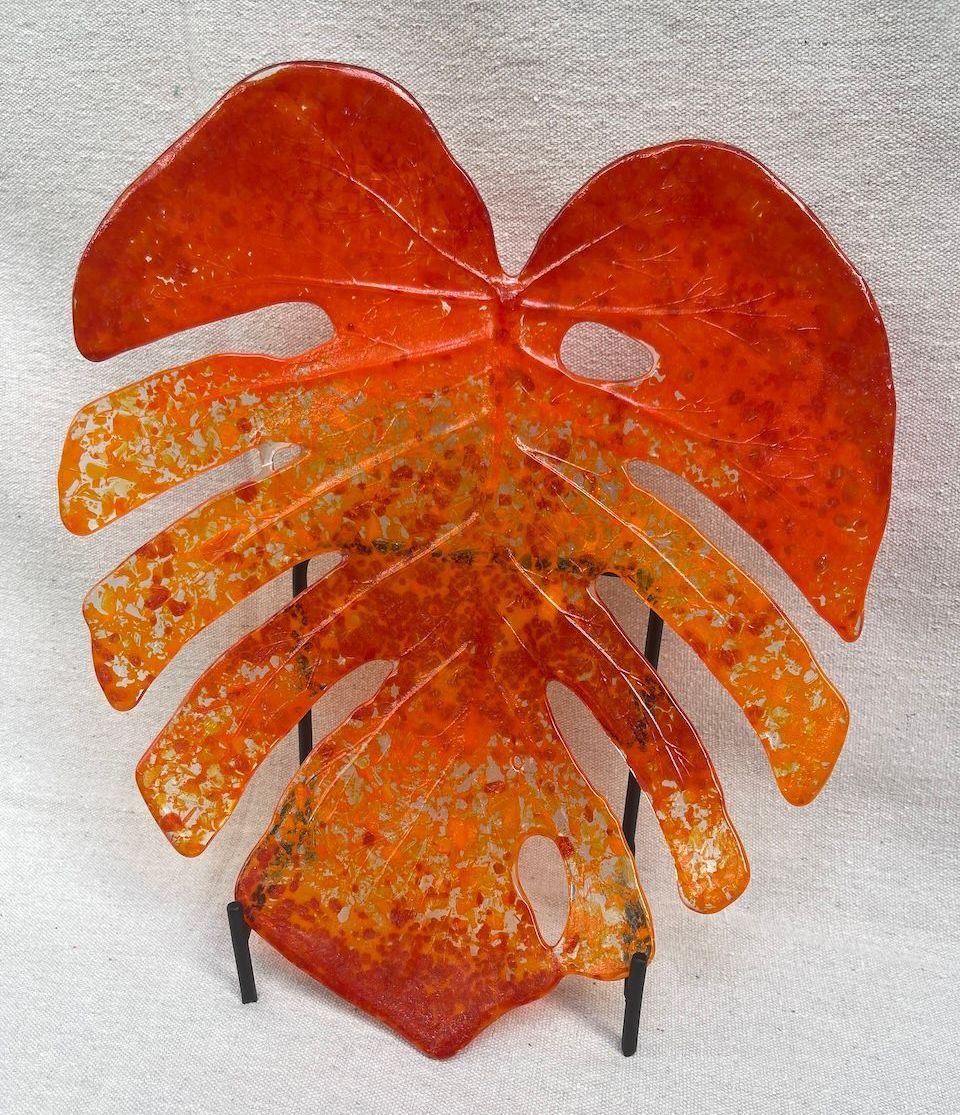
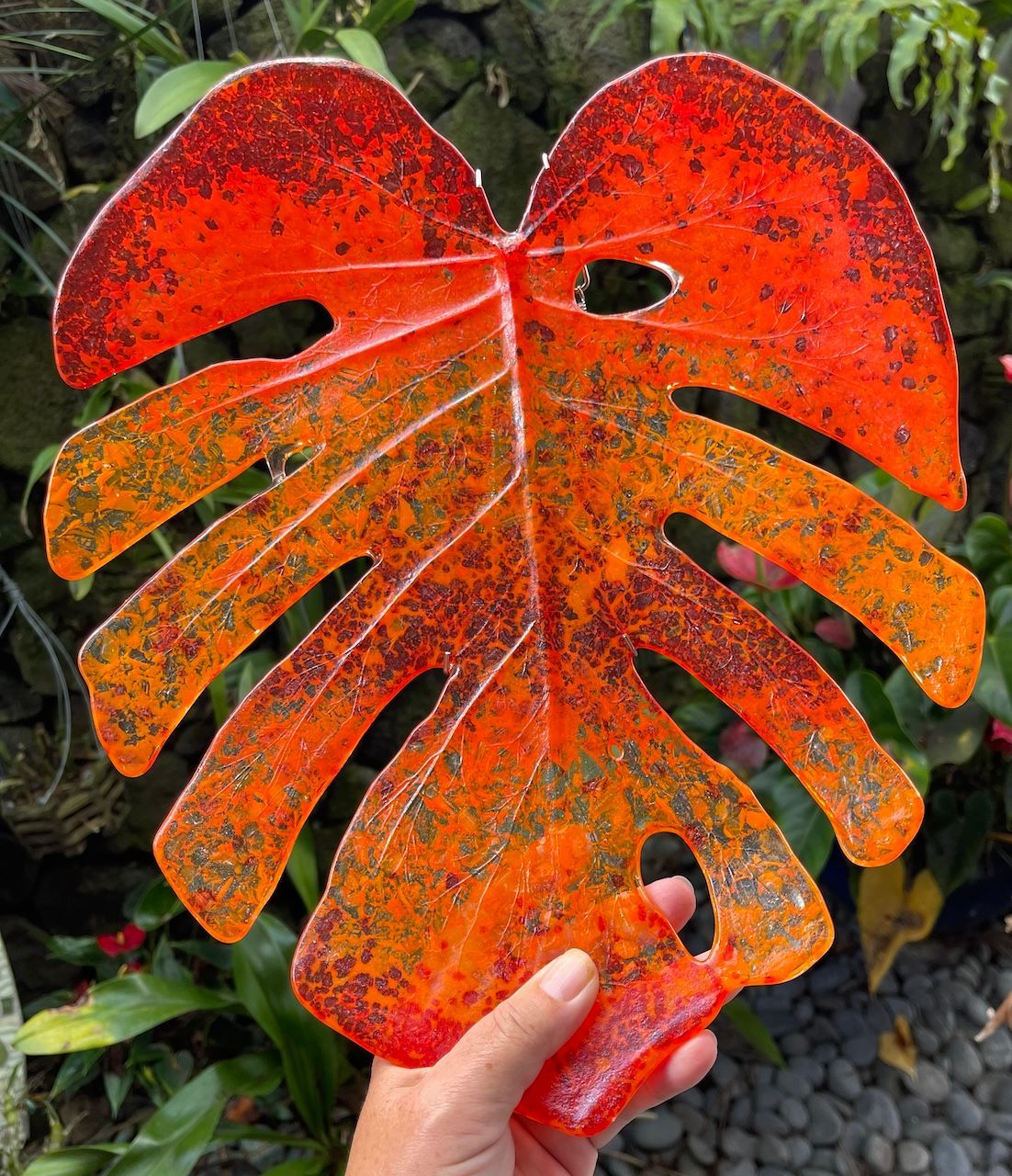
Tamisha Lee will be at the gallery in person on August 5th (Monday), 11th (Saturday), 21st (Wednesday), and 30th (Friday).
Subscribe to Our Monthly Newsletter
Thank you!
Please try again later.
75-5729 Alii Drive, Suite C-110
Kailua Kona, HI 96740
808-329-6653
kailuavillageartistskona@gmail.com
All Rights Reserved | Kailua Village Artists, Inc.

